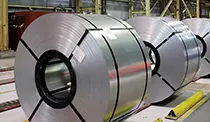Seamless pipe (SMLS) is a kind of pipe widely used in petroleum, natural gas, chemical industry, electric power and other fields. Due to its high strength, corrosion resistance, high temperature resistance and other characteristics, it requires heat treatment during the production process. The heat treatment of seamless steel pipes mainly includes quenching, tempering and other quenching and tempering processes. The application of these processes can further improve the mechanical properties and corrosion resistance of seamless steel pipes to meet the requirements of different fields. This article will introduce in detail the process and principle of heat treatment of seamless pipes.
When manufacturing seamless pipes, high-temperature quenching and tempering heat treatments are usually required. Quenching is to heat the steel pipe to a certain temperature and keep it warm for a certain period of time to make it fully austenitized, and then quickly cool it to transform the austenite into martensite. Tempering is to heat the steel pipe to a certain temperature and keep it warm for a certain period of time to gradually transform the martensite into tempered bainite. The tempered bainite structure has high hardness and strength, and also has certain toughness.
Quenching:
Quenching is an important process for heat treatment of seamless pipes. Its purpose is to heat the seamless steel pipe to a certain temperature and then quickly cool it to obtain higher hardness and strength. During the quenching process, the seamless steel pipe is heated above the austenitizing temperature. At this time, the internal structure of the steel pipe changes from the original pearlite and cementite to austenite, which has higher hardness and strength. During the rapid cooling process, austenite quickly transforms into martensite, which is a high-strength and high-hardness structure that can further improve the mechanical properties of seamless steel pipes.
The following points should be noted during the quenching process:
1. Heating temperature: The seamless steel pipe needs to be heated to a certain temperature during the quenching process. The determination of this temperature needs to consider the material, specification, wall thickness and other factors of the seamless steel pipe to ensure that the internal structure of the seamless steel pipe is fully austenitized. Generally speaking, the quenching temperature of carbon steel is between 800~900℃, and the quenching temperature of alloy steel will be higher.
2. Cooling rate: A suitable cooling rate needs to be selected during the quenching process to ensure that the internal structure of the seamless steel pipe is fully and evenly transformed. Generally speaking, the faster the cooling rate, the more complete the internal structure of the seamless steel pipe, but it will also increase the risk of deformation and cracking of the seamless steel pipe. Therefore, it is necessary to select a suitable cooling rate according to the material, specification, wall thickness and other factors of the seamless steel pipe.
3. Medium selection: A suitable cooling medium needs to be selected during the quenching process to avoid problems such as cracks and deformation of the seamless steel pipe during the cooling process. Commonly used cooling media include water, oil, salt bath, etc., which need to be selected according to factors such as the material and specification of the seamless steel pipe.
Tempering:
Tempering is another important process for heat treatment of seamless pipes. Its purpose is to heat the quenched seamless steel pipe to a certain temperature again, and cool it to room temperature after a certain period of insulation, so as to reduce the hardness and strength of the seamless steel pipe and improve its toughness and corrosion resistance. During the tempering process, the martensite structure after quenching gradually decomposes, and transforms from high-strength and high-hardness martensite to low-carbon alloy steel structure with good hardness and plasticity in low-carbon steel. This structure has good toughness and corrosion resistance, which can further improve the service life and safety of seamless steel pipes.
The following points should be noted during the tempering process:
1. Heating temperature: During the tempering process, the seamless steel pipe needs to be heated to a certain temperature. The determination of this temperature needs to consider factors such as the material, specification, and wall thickness of the seamless steel pipe to ensure that the internal structure of the seamless steel pipe is fully and evenly transformed. Generally speaking, the higher the tempering temperature, the lower the strength and hardness of the seamless steel pipe, and the better the toughness.
2. Insulation time: During the tempering process, it is necessary to keep the temperature at a certain temperature for a certain period of time to ensure that the internal structure of the seamless steel pipe is fully and evenly transformed. The determination of the holding time needs to consider the material, specification, wall thickness and other factors of the seamless steel pipe to ensure that the seamless steel pipe has good comprehensive performance during use.
3. Cooling rate: The cooling rate needs to be controlled during the tempering process to ensure that the internal structure of the seamless steel pipe is fully and evenly transformed. Generally speaking, the slower the cooling rate, the lower the strength and hardness of the seamless steel pipe, and the better the toughness.






















